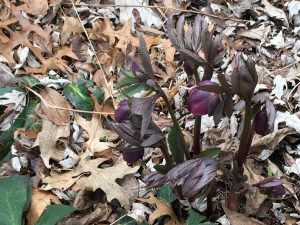
Helleborus ‘Red Racer’ in bud
I can’t believe that my Galanthus and Eranthis are still blooming. If the weather felt more like spring than winter, that would not be the case. I’m still waiting for many of my hellebores to bloom; many of them are budded but open? – probably not for at least another week.
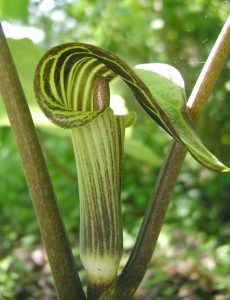
Arisaema triphyllum-fl-dkausen-b
Meanwhile, I’m dreaming about all of the plants waiting to put on their show. One of my favorites is a wildflower that is not an ephemeral, namely Arisaema triphyllum.
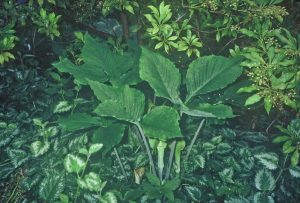
Arisaema triphyllum foliage emerging through Lamiastrum foliage

Arisaema triphyllum berries-fr-dkausen-c
Jack-in-the-Pulpit, an Ohio native, started life in my shade garden as one small plant many years ago. Sheltered under an old Pieris japonica, the large, tripartite leaves and the spathe emerge in April and are about twelve inches high. In May, the green spathe rises above the foliage to two feet and becomes striped with purple. The spathe acts as a shield for the spadix that resembles a finger. This finger is composed of many tiny flowers that become red berries, very similar to those of Arum italicum ‘Pictum’, by late summer. Since first planted, this perennial wildflower has seeded into the initial location and moved across the stone path, almost always in the shade of other Pieris under which the soil is very humusy. These beds are irrigated so the ground is usually somewhat moist, a condition that favors plant happiness.
There are a multitude of Asian species that are much showier than our native Jack but, with one exception, I have either killed them or been unwilling to pay the high prices that they demand. The exception is Arisaema angustatum var.peninsulae DJHJ01010, purchased from Heronswood many years ago when it was still in existence. This Japanese species is very similar to our native but much taller at three to four feet.
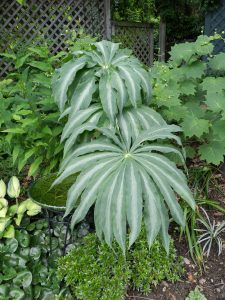
Arisaema consanguineum
I may have to break down and try Arisaema consanguineum (Palm Tree Jack)again because its variegated foliage is so beautiful. I was reminded of its beauty on a garden tour in Baltimore in 2015. This is a Chinese species that is hardy to zone 5 and will grow three to five feet tall.
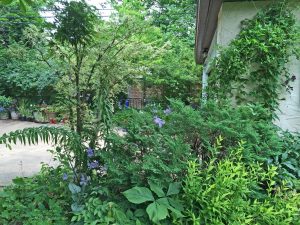
Arisaema angustatum var.peninsulae DJHJ01010
Try combining any of the Jacks with more perennials or shrubs that are variegated. For instance, my native Jack is underlaid with Lamiastrum galeobdolon ‘Variegatum’ and Brunnera macrophylla ‘Jack Frost’. The bold leaves of my Japanese Jack look great next to the yellow foliage of Deutzia ‘Chardonnay Pearls’.
If you have a woodland site, design some Jacks into it.
I spoke last week to the Chippewa Garden Club in Brecksville and will speak this coming Wednesday at 7PM at the Orange Branch of the Cuyahoga County Library about my book, Garden Renovation. Perhaps, I’ll see some of you there.


0 Comments